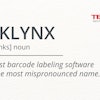
The food and beverage (F&B) industry stands at a pivotal moment. Consumer demands for sustainable and transparent practices are intensifying, while emerging technologies and shifting regulations present both risks and possibilities. Developed with the expertise of industry thought-leaders, these predictions highlight key trends that are projected to influence the trajectory of the food and beverage industry in the coming year. As we near 2025, brands should consider the following areas carefully to support sustainable growth, compliance, and innovation.
AI will speed up new product development
The ability to innovate quickly and get products to market faster than competitors is a critical capability. Although this is no surprise, it’s also where many brands struggle, held back by legacy processes and outdated tools. Artificial intelligence (AI) is driving a massive evolution in this area, revolutionizing tools and processes and unlocking faster innovation.
Brands recognize harnessing AI is critical to stay competitive. In fact, research shows that more than one-third (36%) are already testing the waters for new product development. Another 53% are considering AI for sourcing ingredients and materials, as well as formulating products. AI will be applied in multiple areas to drive product innovation. One significant impact will be to speed up food and beverage formulation by helping companies simulate products digitally rather than physically. Using AI, companies can make a digital twin for each new product, akin to how engineering companies leverage CAD software to model engines and other complex products before actually building them.
AI can also help F&B companies better understand consumers’ preferences, with the ability to synthesize online data, such as comments in online forums and on social media platforms, to give brands a snapshot of how consumers are talking about their products as well as food and beverage trends in general. AI solutions trained on real-world data will help teams harness intelligent formulation capabilities to meet evolving customer needs while also meeting the needs of the business.
The regulatory landscape will be marked by uncertainty
Regulations – especially those surrounding the F&B industry – are being proposed and passed at the global, federal and state levels, causing compliance-related uncertainty and confusion. In the United States, the Federal Government’s traditional, cautious approach to regulatory change has been met with fierce resistance from states like California, which has moved ahead of the Federal Government in banning controversial substances and requiring detailed carbon and greenhouse emissions reporting from larger companies.
The recent overturn of the Chevron Doctrine in the US also limits the authority of federal regulatory agencies, including the FDA, to set rules and enforce policies based on their interpretation of the law. This major change may lead to new complexities in food safety enforcement, and opens the door for FDA rules to be challenged and litigated. While it’s too early to understand the precise impacts, F&B brands should anticipate a shift in the establishment and enforcement of food safety rules in 2025. Federal oversight may be reduced or delayed, state-level regulations may vary, litigation may become a key enforcement tool, and consumers may become more influential in driving regulatory action.
With the recent U.S. election results further fueling all these uncertainties, the result is an increasingly dynamic, and volatile, patchwork of regulatory requirements, particularly for brands with a multinational footprint. Brands should be prepared to keep a close pulse on regulations like never before, on a local, national, and international level, ensuring they have the intelligence needed to make good decisions.
Brands must take the lead on compliance
Overall confidence in U.S. food safety is at its lowest point in a decade, according to the annual IFIC Food & Health survey of American consumers, with 62% confident in 2024 vs. 70% in 2023. With federal food safety oversight potentially scaling back, brands have an opportunity to lead in compliance and quality assurance. A robust quality and safety program can serve as a positive brand differentiator.
While an uncertain regulatory landscape and the overturn of the Chevron Doctrine mean there may be less of a federal focus on food safety oversight, consumers will still demand safe food and brands will want to continue to ensure their products are safe. In 2025, brands will look to fortify quality and safety programs, using this opportunity to reassure consumers that their products are safe to consume and held to the highest quality standards.
Food and beverage supply chains are shifting from linear to networked models
The idea of a linear, static network between suppliers who always supply and buyers who only buy is no longer realistic. We live in an interconnected world, and global disruptions in recent years have demonstrated how deeply those connections run. Supply chains are becoming increasingly complex, driving a need for better data sharing and visibility. The F&B industry is in the midst of an evolution shifting from linear, siloed models to collaborative networks with suppliers and customers powered by data analytics and real-time monitoring.
In 2025, brands will expand their focus beyond simply cost-efficiency to sustainability goals, responsible sourcing, and adaptability. Building agile supply chains that can withstand disruptions while meeting regulatory demand for greater traceability and changing consumer preferences will be table stakes. Success will ultimately rely on building good partnerships with co-manufacturers and suppliers to create a diverse and resilient supply chain.
ESG pressure builds on all fronts, acting as both an expectation and opportunity
Consumers are increasingly prioritizing sustainability in their purchases, with 85% experiencing disruptive impacts of climate change according to a global consumer survey by PwC. This survey also found that 46% of consumers are already buying more sustainable products to reduce their impact on the environment.
As a result, environmental, social, and governance (ESG) initiatives are becoming top of mind for F&B brands. As regulations, consumer preferences, and rising competition put the pressure on brands to deliver more sustainable products, the demand for ESG-compliant ingredients has moved up the list of priorities. Nearly two-thirds (64%) of brands are willing to prioritize ESG-compliant food production.
In 2025, brands will recognize their power to shape lasting positive change, foster trust, and drive innovation in ways that resonate deeply with today’s conscious consumers – particularly since the global F&B industry contributes heavily to greenhouse gas emissions. As consumers vote for ESG with their wallets, brands have an opportunity to win their hearts and minds while creating a more sustainable food supply chain that reduces the industry’s overall environmental impact.
Key takeaways for food and beverage brands
By embracing these insights, brands can unlock opportunities and turn challenges into stepping stones toward a more innovative and sustainable future. ESG compliance, product innovation, supply chain visibility, and quality assurance will be at the forefront of industry developments and consumer expectations in 2025. Leverage these trends to stay ahead in a rapidly evolving food and beverage landscape.





![Top Tech Logo Vertical [color]](https://img.foodlogistics.com/files/base/acbm/scn/image/2024/11/top_tech_logo_Vertical__color_.672d2a7c2733d.png?auto=format%2Ccompress&bg=fff&fill-color=fff&fit=fill&h=167&q=70&w=250)














